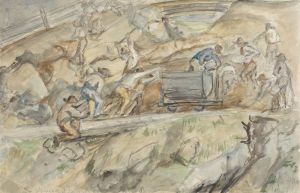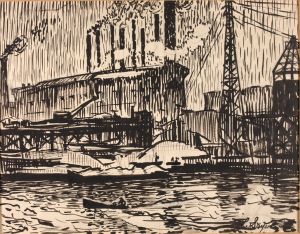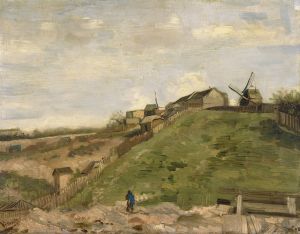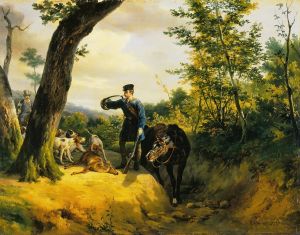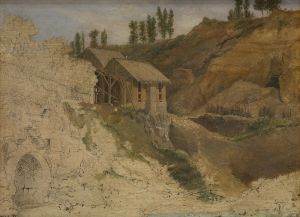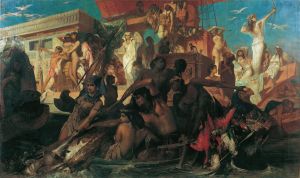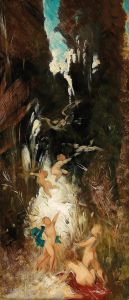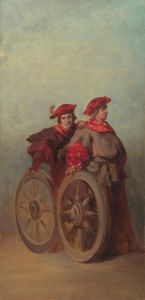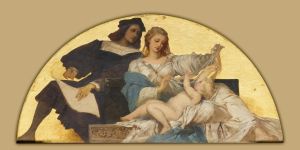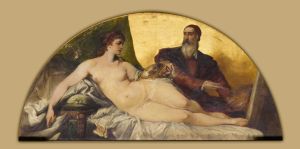
Entwurf zum Festzug 1879 – Der Bergbau
A hand-painted replica of Hans Makart’s masterpiece Entwurf zum Festzug 1879 – Der Bergbau, meticulously crafted by professional artists to capture the true essence of the original. Each piece is created with museum-quality canvas and rare mineral pigments, carefully painted by experienced artists with delicate brushstrokes and rich, layered colors to perfectly recreate the texture of the original artwork. Unlike machine-printed reproductions, this hand-painted version brings the painting to life, infused with the artist’s emotions and skill in every stroke. Whether for personal collection or home decoration, it instantly elevates the artistic atmosphere of any space.
Hans Makart was an Austrian painter known for his influence on the art and culture of Vienna in the late 19th century. One of his notable works is "Entwurf zum Festzug 1879 – Der Bergbau," which translates to "Design for the Procession 1879 – The Mining." This painting is part of a series of designs created by Makart for a grand parade held in Vienna in 1879 to celebrate the silver wedding anniversary of Emperor Franz Joseph I and Empress Elisabeth of Austria.
Makart was commissioned to design the entire procession, which was a significant cultural event at the time. The parade was intended to showcase the history, culture, and achievements of the Austro-Hungarian Empire, and Makart's designs played a crucial role in its visual presentation. His work for the procession included a series of allegorical floats, each representing different aspects of the empire's heritage and accomplishments.
"Der Bergbau" specifically focuses on the theme of mining, an important industry within the Austro-Hungarian Empire. The painting reflects Makart's characteristic style, which is known for its vibrant colors, dynamic compositions, and dramatic use of light and shadow. In this work, Makart likely depicted figures and symbols associated with mining, although specific details of the painting's composition are not widely documented.
Makart's involvement in the 1879 procession was a testament to his status as a leading artist of his time. He was often referred to as the "painter prince" and was celebrated for his ability to blend historical themes with contemporary aesthetics. His work for the procession was not only a display of artistic skill but also a reflection of the cultural and political aspirations of the Austro-Hungarian Empire.
The 1879 procession itself was a grand spectacle, with Makart's designs contributing to its opulence and grandeur. The event was attended by thousands of spectators and was a highlight of Vienna's social calendar. Makart's designs, including "Der Bergbau," were praised for their creativity and attention to detail, further cementing his reputation as a master of historical painting.
While the original painting "Entwurf zum Festzug 1879 – Der Bergbau" may not be as widely recognized today as some of Makart's other works, it remains an important part of his oeuvre. It exemplifies his ability to capture the spirit of an era and his contribution to the cultural life of Vienna during the late 19th century. Makart's legacy continues to be appreciated for his role in shaping the visual culture of his time and for his influence on subsequent generations of artists.





